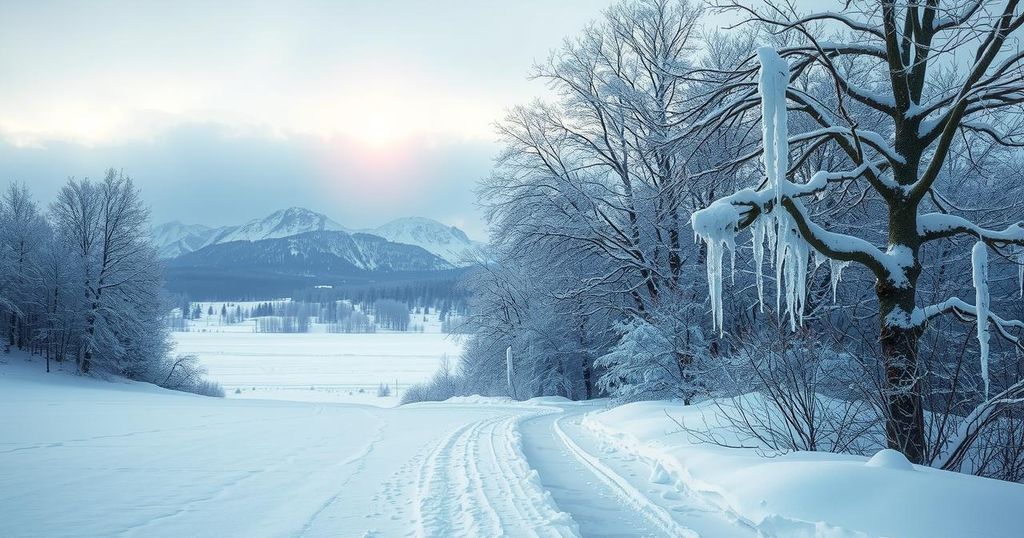Reflecting on America’s Historic Cold Wave of February 1899

In February 1899, America experienced a historic Arctic cold wave that affected every state, setting numerous record low temperatures. This extreme weather event culminated in significant infrastructures issues and unusual weather patterns across the nation, marking it as one of the most severe cold outbreaks in U.S. history.
Arctic cold outbreaks are often overlooked in historical accounts, yet the one that occurred in mid-February 1899 stands out as a significant event. Weather historian Christopher Burt identifies this cold wave as “the greatest cold wave in modern U.S. history.” It spanned the first two weeks of February and impacted the entire United States, leading to unprecedented freezing temperatures across all states at the time, including subzero readings in places that were not accustomed to such cold.
Remarkably, every one of the then-existing 45 states recorded temperatures below zero during this outbreak. Areas usually warm such as south-central Texas, Gulf Coast beaches, and northwest Florida experienced extreme cold. Notably, Tallahassee, Florida, recorded its only subzero temperature of minus 2 degrees on February 13, marking the state’s all-time record low and a significant meteorological anomaly for the region.
The cold wave set all-time low temperature records in various states across the country. These included Louisiana, Nebraska, and Ohio, with readings as low as minus 16 degrees in Minden, minus 47 degrees in Camp Clarke, and minus 39 degrees in Milligan, respectively. In addition, cities such as Atlanta, Grand Rapids, and Wichita recorded their lowest temperatures ever, reaching minus 9, minus 24, and minus 22 degrees, respectively, while parts of Montana and Minnesota recorded astonishing lows of minus 61 and minus 59 degrees.
The impact of this cold outbreak was widespread, with the Mississippi River freezing solid north of Cairo, Illinois. The extremity of the cold led to ice jams, causing floods along numerous rivers, and in San Antonio, residents engaged in ice skating as the river froze over. The lack of snow cover resulted in significant ground freezing, which damaged essential infrastructure in cities like Chicago.
Moreover, structural impacts were felt in New York City, where engineers observed that the trusses on the Brooklyn Bridge contracted by 14 feet due to the frigid temperatures. In response to frozen aqueducts from the Catskills, Newark had to source water from alternative rivers and bays, further indicating the extensive effects of this historical cold outbreak.
The cold wave of February 1899 represented a unique meteorological event, as it impacted every state in the United States, leading to record low temperatures that are still recognized today. Its effects were far-reaching, causing significant infrastructure challenges and altering daily activities across several regions. This cold outbreak serves as a reminder of the extreme weather phenomena that can occur and the lasting records they can establish in history.
Original Source: weather.com







